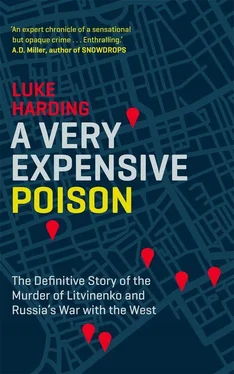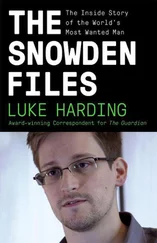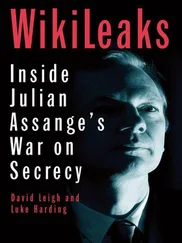Simmonds was a figure who might have sprung from the pages of Agatha Christie – a distinguished botanist in late middle age, thin, dressed in a severe black trouser suit and with short cropped hair. She had previously been involved in some extraordinary cases. In 2001, the limbless and headless body of a boy had been found floating in the river Thames. Forensic tests at Kew revealed traces of the toxic calabar bean in the lower intestine. The plant trail led to West Africa, where witch doctors use the bean to paralyse their victims. The police concluded the boy – aged five or six – had been ritually murdered.
Simmonds’ latest findings were similarly sensational. They were revealed at a pre-inquest hearing in Woking. She had tested samples taken from the dead man against a range of deadly plants. Perepilichnyy had been poisoned. He was the victim of a twining climber found in scrubby mountain forests.
The poison came from one of five possible varieties of the lethal gelsemium plant. The plant contains gelsemine, a compound similar to strychnine. The plant is a weapon of choice among Chinese and Russian assassins. Simmonds discovered traces of an ion linked to gelsemium in Perepilichnyy’s stomach. The most toxic variety is Gelsemium elegans . It grows only in Asia. The poison’s last known victim was Long Liyuan, a Chinese billionaire who died in 2011 after eating cat meat stew believed to have been laced with Gelsemium elegans.
This was a dramatic development. The focus now was on Perepilichnyy’s last meal. What was it and who was his dining companion? There were clear parallels with Litvinenko – here, once again, was an apparent reprisal killing of someone with potent enemies in Moscow.
But there were differences, too. Perepilichnyy’s widow Tatiana insisted her husband wasn’t murdered. There was no direct evidence, she said. She accused Hermitage of peddling ‘lazy stereotypes’. Not every Russian exile who dropped dead was the victim of foul play, she added.
The case went on, disputed and unresolved, into 2016. Surrey Police continued to insist Perepilichnyy’s death was wholly ordinary. At the same time, however, it refused to release forty-two documents, on the grounds of national security. Three years on, this was a surprising move. It raised another possibility. Before his murder, had Perepilichnyy talked to Britain’s spy agencies?
* * *
In March 2009, the US secretary of state and future presidential candidate Hillary Clinton presented her Russian counterpart Sergei Lavrov with a small green box tied with a ribbon. The venue was Geneva; the mood was warm; there were smiles and handshakes from the American and Russian delegations.
Lavrov opened the box. Inside it was a red button on a yellow background, and the word peregruzka . As Lavrov noted with some glee, the word ‘ peregruzka ’ actually means ‘over-charged’. The Obama administration had meant to write perezagruzka – the Russian noun for ‘reset’.
The blooper was emblematic of how US know-how on Russia had degraded in the post-Cold War era, as Washington became distracted with international wars (Afghanistan, Iraq); grappled with the hydra-headed threat after 9/11 of radical Islamist terrorism; and assumed that Russia, its defeated Cold War adversary, was moving slowly towards liberal democracy. It wasn’t. The US State Department still had Russian area specialists, of course. But it appeared that none of them could spell.
During the presidencies of George W. Bush, relations with Moscow sank. Putin supported the US-led war in Afghanistan but opposed Iraq. The Russian president’s list of grievances against Washington grew. Briefly summarised, they included Nato expansion, the US’s putative missile defence programme in Europe, and the pro-western and pro-reform revolutions in Georgia and Ukraine, which Putin claimed were an American-inspired plot.
Relations reached a nadir in August 2008, when Mikheil Saakashvili, Georgia’s president and a US ally, tried to seize back the rebel province of South Ossetia using military force. Russia responded with a full-scale invasion. It was a brutal lesson in regional geo-politics. And a practical articulation of the Kremlin’s new big power doctrine: that it had ‘privileged interests’ in its post-Soviet back and front yards.
The Obama administration’s decision to ‘reset’ relations with Russia was pragmatic. The goal was not to turn Russia into a progressive law-based state – an unlikely prospect that could only be achieved by Russians themselves – but to secure Moscow’s co-operation on key international challenges. These were Obama’s first-term priorities. They included Iran’s nuclear programme; Afghanistan; the common threat from Al Qaida; and – as the Arab Spring took hold – the disastrous war in Syria.
The White House’s calculus was strategic, though there was an element of wishful thinking too. Between 2008 and 2012, Dmitry Medvedev – an ex-lawyer who grew up in the 1970s and was a fan of the British rock group Deep Purple – was Russia’s titular president. Leaked US diplomatic cables show that the US was keen to treat the liberal-seeming Medvevev as a genuine interlocutor. In reality, it was the hawkish Putin who pulled the strings.
When Browder turned up in Washington it was unsurprising that the state department responded coolly to his plan to punish Magnitsky’s killers. Browder was seeking to use an obscure law passed by President Bush in 2004 that allows the US to impose visa sanctions on corrupt foreign officials. He lobbied senators, journalists and anybody who would listen to him. His aim was to pass into law a Magnitsky act. The act would freeze the assets of those involved in his lawyer’s death.
Browder had found Putin and co.’s Achilles heel. In Soviet times, the politburo lived quite a bit better than the average Soviet citizen. It had special shops and holidays on the Black Sea. In Putin’s Russia, however, the difference was vast. Top bureaucrats, including the Klyuyev gang, were worth millions. They enjoyed international lifestyles. What was the point of stealing all that money if you could only spend it in Sochi, with its scruffy pebbly beach?
In December 2012, weeks after Perepilichnyy’s death, Congress passed a landmark Magnitsky law. It blocked eighteen Russian officials from entering America. Most importantly, the law denied them access to US banking facilities.
The law drew an apoplectic, asymmetric response from Putin. He ended the adoption of Russian babies by American couples. And, in a twist that might have been written by Gogol, the Kremlin put Magnitsky on trial. That he was already dead was apparently not an obstacle. In summer 2013, a judge convicted him of tax evasion, announcing a surreal verdict to an empty barred cage.
Britain’s David Cameron once took a tough stance on the Kremlin. In 2008, as Russian troops overran Georgia, Cameron flew to the capital Tbilisi to show solidarity with Saakashvili. At the time, Cameron was leader of the opposition Conservatives. It was a piece of opportunism that embarrassed the UK’s then prime minister Gordon Brown. Cameron called for Russia’s suspension from the G8 and offered a memorable line: ‘Russian armies can’t march into other countries while Russian shoppers carry on marching into Selfridges.’
After entering Downing Street in 2010, Cameron’s attitude towards the Russian government softened. Brown had refused to meet with Putin following Litvinenko’s murder. Cameron, by contrast, appeared keen to move on from the polonium episode. Britain still sought the extradition of Lugovoi and Kovtun, of course. But, Cameron indicated, these bilateral differences could be ‘negotiated around’ and shouldn’t prevent cooperation in other areas, especially trade.
Читать дальше












